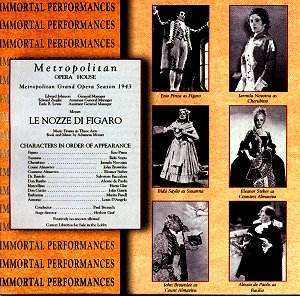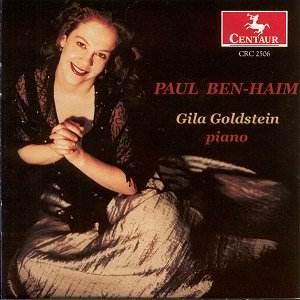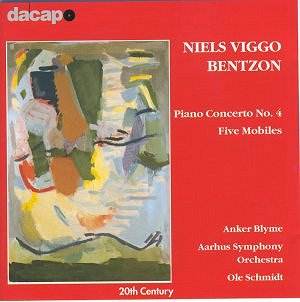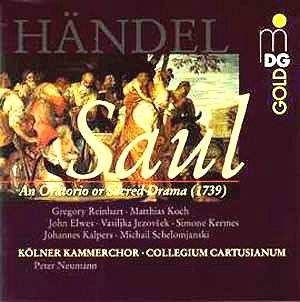 Composer: Wolfgang Amadeus Mozart
Composer: Wolfgang Amadeus Mozart
Works: Le Nozze di Figaro
Performers: Ezio Pinza (Figaro, bass-baritone), Bidú Sayão (Susanna, soprano), Jarmila Novotna (Cherubino, mezzo-soprano), John Brownlee (Il Conte Almaviva, baritone), Eleanor Steber (Il Contessa Almaviva, soprano), Salvatore Baccaloni (Dr. Bartolo, bass), Hertza Glaz (Marcellina, mezzo-soprano), Alessio de Paolis (Don Basilio, tenor), John Garris (Don Curzio, tenor), Marita Farell (Barbarina, soprano), Louis D’Angelo (Antonio, bass)
Recording: Recorded live in April 1943
Label: Guild Historical 2203-5
Mozart’s Le Nozze di Figaro, premiered in 1786, stands as a monumental achievement in opera, blending comedy with a profound exploration of social issues and human relationships. The work is an adaptation of Pierre-Augustin Caron de Beaumarchais’s play, which boldly critiques the aristocracy while celebrating the cleverness and resilience of the lower classes. The 1951 recording from Guild Historical, featuring a stellar cast under the direction of Paul Breisach, captures this spirit with a vibrancy that transports the listener back to the heart of wartime New York, where this performance was originally broadcast.
Ezio Pinza’s portrayal of Figaro is a hallmark of vocal artistry; his voice resonates with a combination of dynamism and lyrical beauty that elevates his character to one of palpable charisma and depth. Pinza’s phrasing, particularly in the Act I aria “Se vuol ballare,” reveals a masterful command of the text, as he weaves humor with a touch of pathos. His dramatic weight is effectively matched by Bidú Sayão’s Susanna, whose bright, agile soprano imbues the role with vivacity and charm. The duo’s chemistry is especially evident in the glorious “Sull’aria,” where their voices entwine with exquisite balance—a testament to their collaborative artistry.
Jarmila Novotna’s Cherubino, often celebrated for its youthful exuberance, is performed with a captivating blend of innocence and mischief. Her vocal agility stands out in the famous “Voi che sapete,” where she navigates the emotional complexities of young love with remarkable sensitivity. However, it is John Brownlee’s Count Almaviva who presents a more challenging interpretation. Although his robust voice commands attention, his portrayal lacks the nuanced emotional range found in contemporaneous interpretations, often coming across as too stolid until his aria in Act III, where he finally reveals a more expressive side, suggesting a late blooming of character depth.
The orchestral playing, while occasionally hampered by the constraints of live recording from the 1940s, remains impressively cohesive. Breisach leads the Metropolitan Opera Orchestra with a keen sense of pacing, although there are moments where the tempo feels somewhat hurried, particularly towards the end of Act IV, where the final ensemble rushes ahead, almost leaving the timpanist behind. Nevertheless, the orchestra’s support of the singers is generally commendable, though one wishes for a more prominent blend of instrumental color to match the vocal richness.
Sound quality, as is often the case with historical recordings, presents both challenges and rewards. The transfer from original transcription discs does exhibit some surface noise and occasional dips in clarity, but these imperfections add an authentic charm, allowing the listener to feel the live atmosphere of the performance. The applause after each character’s entrance can be distracting, momentarily overshadowing Mozart’s delicate orchestration, yet it also serves as a reminder of the communal experience of opera—a lively interaction between the performers and the audience.
The inclusion of the Standard Hour Concert featuring Sayão and tenor Eugene Conley offers an appealing contrast to the main performance, showcasing Sayão’s lyrical prowess in selections from Manon and Faust, further highlighting her versatility.
This recording of Le Nozze di Figaro emerges not merely as a historical artifact but as a vibrant testament to the artistry of its performers and the enduring brilliance of Mozart’s composition. The blend of superb vocal performances, particularly from Pinza and Sayão, with a generally effective orchestral accompaniment creates a compelling, if imperfect, rendition of this operatic masterpiece. As an addition to the catalog of historical performances, it stands as a significant achievement, deserving of a cherished place in the collections of both opera aficionados and casual listeners alike.



